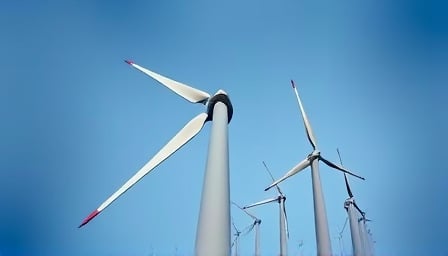Orsted AS: A Financial Crossroads Amidst Green Energy Ambitions
In a bold move that underscores the financial tightrope walked by green energy giants, Danish energy firm Orsted A/S is reportedly considering a substantial €5 billion rights issue. This strategic financial maneuver, aimed at bolstering the company’s balance sheet, comes at a critical juncture as Orsted navigates the volatile waters of the renewable energy sector. With a close price of 308.9 DKK as of August 6, 2025, and a staggering price-to-earnings ratio of 117.46771, the company’s financial health is under intense scrutiny.
Orsted, a behemoth in the utilities sector with a focus on electric utilities, has been at the forefront of the transition to renewable energy. Specializing in offshore wind farms, bioenergy plants, and waste-to-energy solutions, Orsted’s operations span across the globe, from the United Kingdom and Germany to the United States and Taiwan. Despite its pioneering role in the green energy revolution, the company’s financial strategy reveals the underlying challenges faced by the sector.
The decision to potentially raise €5 billion through a rights offering is not just a financial decision but a strategic one, reflecting the broader challenges of scaling up renewable energy infrastructure. This move comes as Orsted prepares to unveil its first half-year 2025 results on August 13, 2025. The anticipation surrounding these results is palpable, with investors and analysts keenly awaiting insights into the company’s financial performance and strategic direction.
Adding to the intrigue, DNB Carnegie has recently adjusted its target price for Orsted to 310 DKK, up from 300 DKK, while maintaining a hold recommendation. This adjustment by DNB Carnegie signals a cautious optimism about Orsted’s future prospects, amidst a backdrop of fluctuating energy prices and the relentless push towards a carbon-neutral future.
The broader context of Orsted’s financial strategy cannot be divorced from the global push towards renewable energy, exemplified by the UK’s latest offshore wind power auction. As countries scramble to secure enough renewable capacity to meet ambitious carbon-free electricity grid targets by 2030, the stakes for companies like Orsted have never been higher. The UK’s auction, aimed at guaranteeing power prices for renewables developers, underscores the critical role of financial strategies in achieving these green energy goals.
However, the path to a sustainable energy future is fraught with challenges. Britain’s ambition to harness the AI revolution, for instance, is hampered by the high electricity costs associated with powering data centers. This reality check serves as a reminder of the complex interplay between energy policy, financial strategy, and technological advancement.
In conclusion, Orsted’s consideration of a €5 billion rights issue is a microcosm of the broader challenges and opportunities facing the renewable energy sector. As the company stands at a financial crossroads, its decisions will not only shape its own future but also influence the trajectory of the global transition to green energy. The coming months will be critical for Orsted, as it navigates the financial, technological, and policy landscapes that define the renewable energy sector.
